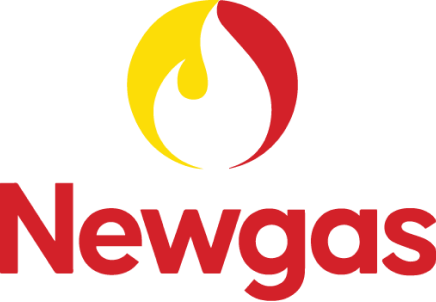FAQs
Deliveries
Newgas LPG Delivery Agents undergo thorough screening and training processes to ensure they are qualified individuals to be allowed into your homes so they can offer support with the connection of your LPG cylinder to your burner/stove both on your first order and subsequent orders. The final decision to allow them into your house is however left entirely to your discretion and, Newgas will not accept any responsibility or be liable for damages should you allow an LPG Delivery Agent into your home.
a. Uniform and Identification: Newgas delivery agents will typically wear the company’s uniform and carry official identification cards with the Newgas logo and their name/photo. Ask to see their identification if it's not immediately visible.
b. Newgas Branded Delivery Vehicle: Newgas LPG Delivery Agents will only arrive in vehicles marked and branded with the Newgas logo and colours.
He will first of all confirm your order by scanning the QR code on your receipt or ask for the 4 digit PIN sent to you when you completed your order. He will then proceed to scan the QR code on your empty cylinder to be able to receive that from you. The LPG Delivery Agent will then proceed to scan the QR code on the filled cylinder(s) in your order and hand these over to you. If approved by you, he will install the filled cylinder at its normal location and connect the hoses for you. On your first order, the LPG Delivery Agent will also guide you on safety practices to be adopted while using LPG for Cooking.
a. Each Cylinder is filled and weighed at the bottling plant using weighing scales that have been calibrated by the standards board. After loading, each cylinder is sealed with a temper evident PVC seal. Upon delivery, check that the seal is intact. Reject the filed cylinder if there is no seal or the seal has been broken or damaged.
b. Each Newgas LPG Cylinder has the tare weight (weight of the empty cylinder) inscribed on it. The full weight of the LPG in the cylinder can be computed by subtracting this tare weight from the weight of the filled cylinder. Each LPG Delivery Agent will have a scale in their possession so Newgas customers can request for their filled cylinder to be weighed at all times. This weight should be within a reasonable tolerance from the expected weight.
All Newgas LPG cylinders are examined for leakages before they leave the bottling facility. Additionally all Newgas cylinders are fitted with a leakproof cap which when fitted prevents any form of leaks from the valve. The LPG Delivery Agent will break the seal in front of Customer and will carry out leak checks of the cylinder before it is handed over to the customer.
All Newgas LPG cylinders will come fitted with a tamper evident seal. In the event where the seal is broken, please reject the cylinder and request for one with the seal intact.
Reject the cylinder presented by the delivery agent and report such incidents to our customer care centre for assistance. If it’s an exchange point insist on a new cylinder with none of the above issues. Where this fails please call the customer care number 0302428877
You can authorize someone to receive the Newgas LPG Cylinder on your behalf by giving the person your empty cylinder for the exchange and the 4 – digit PIN that was sent to you on confirmation of your order. Without these the cylinder will be sent back to your Newgas Distributor.
You can reschedule your delivery to another day and time by calling our customer care centre or through the Newgas mobile app.
You can only reschedule your delivery if it has not already been dispatched. The window for rescheduling of orders closes two hours before the scheduled time.
Order status changes to shipped on the Newgas app. You can also find the status by calling the Newgas customer care centre.
Still have questions?
Can’t find the answer you’re looking for? Please talk to our consultant.
Towards a better Future
By getting more people to move from the use of charcoal and wood for cooking to LPG the Group is helping to conserve our forests and protect ecosystems for future generations ensuring a better future for all. Newgas aims to reduce these health risks by building LPG infrastructure and promoting LPG usage for cooking.



